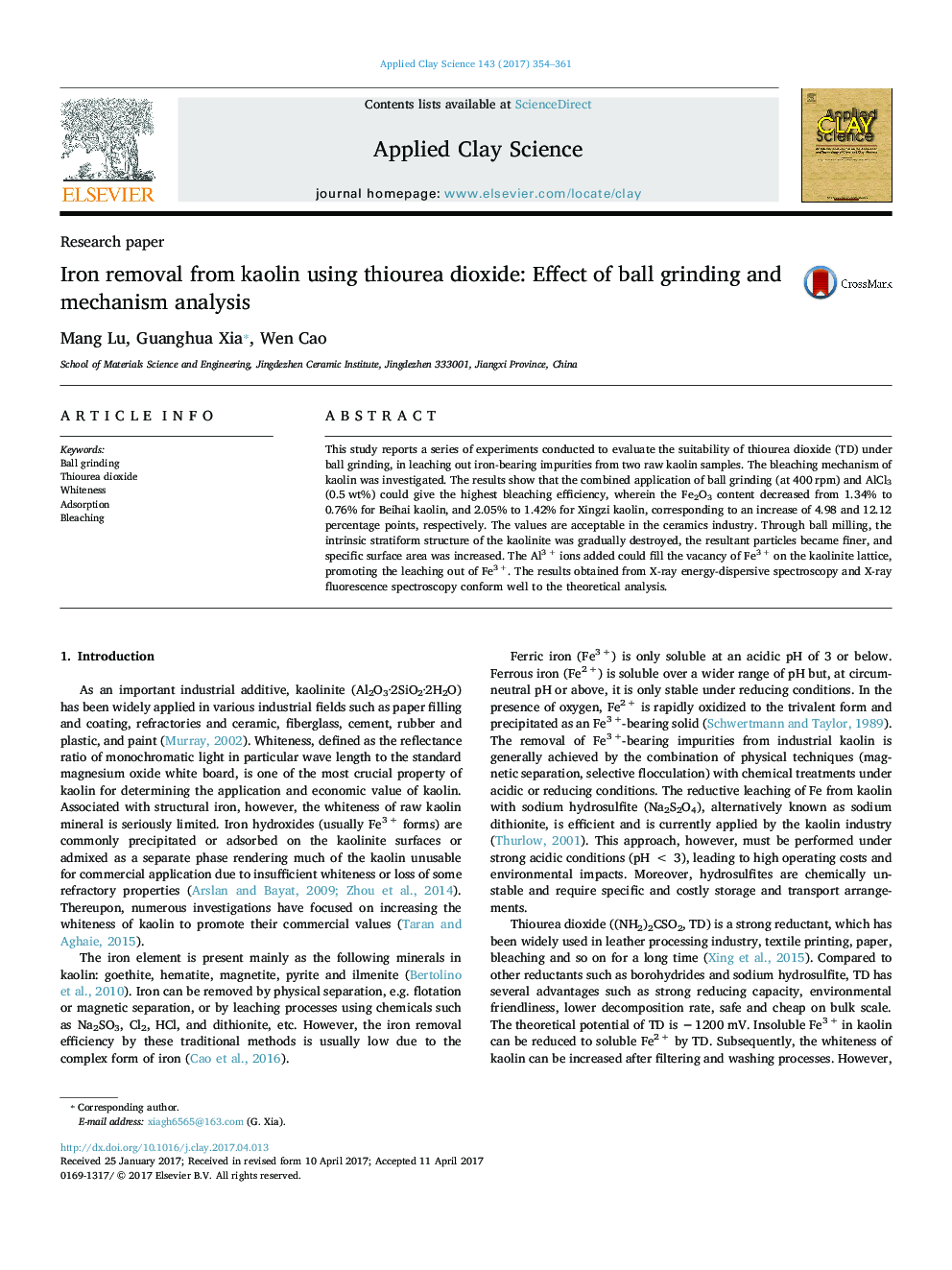| Article ID | Journal | Published Year | Pages | File Type |
|---|---|---|---|---|
| 5468931 | Applied Clay Science | 2017 | 8 Pages |
Abstract
This study reports a series of experiments conducted to evaluate the suitability of thiourea dioxide (TD) under ball grinding, in leaching out iron-bearing impurities from two raw kaolin samples. The bleaching mechanism of kaolin was investigated. The results show that the combined application of ball grinding (at 400Â rpm) and AlCl3 (0.5Â wt%) could give the highest bleaching efficiency, wherein the Fe2O3 content decreased from 1.34% to 0.76% for Beihai kaolin, and 2.05% to 1.42% for Xingzi kaolin, corresponding to an increase of 4.98 and 12.12 percentage points, respectively. The values are acceptable in the ceramics industry. Through ball milling, the intrinsic stratiform structure of the kaolinite was gradually destroyed, the resultant particles became finer, and specific surface area was increased. The Al3Â + ions added could fill the vacancy of Fe3Â + on the kaolinite lattice, promoting the leaching out of Fe3Â +. The results obtained from X-ray energy-dispersive spectroscopy and X-ray fluorescence spectroscopy conform well to the theoretical analysis.
Related Topics
Physical Sciences and Engineering
Earth and Planetary Sciences
Geochemistry and Petrology
Authors
Mang Lu, Guanghua Xia, Wen Cao,
